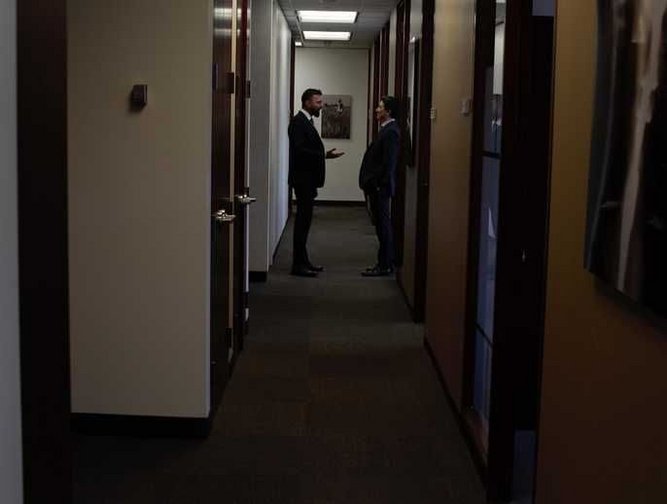Exclusive Interview and Video: Goldcorp’s Procurement and Supply Chain Transformation
Eighteen months ago, Rishi Ghuldu, Goldcorp’s Vice President of Supply Chain & Asset Management, sat down with the company’s Chief Operating Officer, Todd White, to discuss how the company’s Supply Chain was performing and at what pace it was maturing. There was a realisation that while progress was being made, the trajectory of change was not where it needed to be. Ghuldu and White decided that Goldcorp needed to demonstrate real change in a matter of months, rather than years or even decades.
The decision was made to push the accelerator and challenge the Supply Chain and Procurement function to quickly prove its value to the business, allowing it to emerge from a back-office function to a team with a voice at the company’s top table. In Ghuldu’s own words: “We really wanted to catapult ourselves forward.” A deep dive into the company’s Supply Chain function was undertaken, as well as a close study of successful Supply Chain transformations both within mining and other sectors.
“We mapped out where mining is relative to other industries in terms of Supply Chain maturity, and we felt it was lagging. Each of our mine sites were doing their own thing, which was often correct, but we were certainly missing out on a number of opportunities. We took the decision to centralise our Supply Chain enabling us to leverage our portfolio strength- this was really vital to our supply chain transformation.”
Goldcorp is a company that is predominantly decentralised so a great deal of work went into building the business case to centralise the Supply Chain function.
“Technically, the decision to migrate the function is not too difficult,” he says. “But the company’s Supply Chain touches thousands of our employees every day. Getting the change approved involved conversations with Goldcorp’s investment committee, Mine Managers and the Executive team. It was so important to get our team to understand the thinking behind the move. We pinpointed some early wins and were able to build momentum and support for the transformation.” Ghuldu and his team studied how other companies had turned their Supply Chain and Procurement functions from a largely lethargic function to one that added tangible value. The key was found to be a fundamental change in attitude.
“To be successful, we had to be candid about our capability of doing this ourselves, so we took our ego out of the equation. We realised that there were companies around the world we could build partnerships with that are very skilled at what they do – we understand that we can’t do it all ourselves. We believe that by forming this partnership, we have been able to achieve in 18 months what companies going at it alone might take seven or eight years to achieve. That’s enabled us to overtake some of our competition. We want to be an industry leader – we’re not gunning for second place.”
“We took the decision to go ‘all-in’, so each of our sites is in the process of being converted to the new model. It’s a lot of change in a short amount of time but it’s been communicated in a clear and consistent fashion and we completely believe there is value in doing it this way rather than over a longer, phased period of time.”
Ghuldu is keen to stress that under the new model, it is the planning of the Supply Chain that is centralised, with the individual sites overseeing the execution. Specifically, the Supply Chain team meets regularly with senior management, corporate and finance to talk about the potential spend over the next 12-24-month period, and define sourcing opportunities. From there, a decision is made about whether an opportunity exists for a single site, a regional opportunity – taking in three to four mines or a global opportunity.
“We then report back to the operations, because that's where most of our purchasing takes place. To a large extent, we’re able to provide what each site is going to target in terms of spend, and what their respective savings targets are going to be for the following year and the year after. Sites know their goals and what opportunities they can leverage.”,” Ghuldu comments.
The transformation has also been built on access to market intelligence, with professionals communicating regularly with Goldcorp about global trends, commodity performance and how foreign exchange rates might impact a project or an initiative.
“When we are sitting across from our suppliers, we are now equipped with more knowledge of the broader picture and of the supplier base, which greatly impacts how the negotiation takes place and how we are able to drive results.”
The transformation has truly increased the spotlight on the company’s Supply Chain planning and execution, in turn making the function an integral part of Goldcorp’s wider goals.
“Prior to this transformation, we had some targets within the Supply Chain function that were generally fairly low; without a lot of questioning around the targets or accountability for realisation of those targets. Supply Chain was not an integral part of the overall planning process – we didn't have a seat at the table. Because of this transformation, our performance numbers are now significant enough that Supply Chain is an important part of the operations budget.”
“Goldcorp has a global target of 20-20-20, which means by the year 2021, Goldcorp is aiming to increase its production by 20%, decrease its costs by 20% and increase its reserve base by 20%. Supply Chain is a significant contributor to that 20% cost reduction. Because of that focus from the board, the auditors and the market, we have to deliver on our plans. The transformation is really helping our business become more competitive and sustainable, while lowering costs.”
A case in point is a 40% improvement in the time it takes for a purchase requisition to be converted into an issued purchase order. According to Ghuldu, that has been achieved by standardising processes and rolling out successful initiatives from one site across all of its mines. It is a more consistent, higher level of service, leading to improved confidence from clients, he says.
See also:
- Exclusive interview: Jabil’s VP of supply chain management, John Caltabiano
- By undertaking its six-year procurement strategy, Safilo has transformed its supply chain operations
- How SCT Group leverages technology and a commitment to service to provide logistics solutions
The company has also been able to provide growth opportunities for its professionals, says Ghuldu: “We are starting to operate as a more cohesive global team, and provided expanded roles for our Supply Chain staff, whether that’s the site leaders who are now managing offshore teams or global category managers taking on additional categories. We have more resources at our discretion than we have had before, which means more opportunities that we can realize.”
Ghuldu recognises that Supply Chain is but one spoke of a larger wheel at Goldcorp and is keen to highlight the whole value chain of its Supply Chain maturity. “It is a reflection of the hugely successful collaboration between; Operations, Asset Management, IT, Finance and HR teams within Goldcorp.”
Despite such a successful transition, Ghuldu is still looking to the future, still looking for opportunities to improve. Part of that effort is integrating cutting-edge technology into the Supply Chain function.
“We've been able to put foundational processes in place and started to generate results, so we can look forward. The thing I believe is going to be the next, call it, Supply Chain disruption in our business is how we do demand planning. So, it’s about integrating the planning of Operations, Asset Management and Supply Chain, and doing so in a real-time manner,” Ghuldu comments.
“We can utilize technologies such as condition monitoring and end-to-end visibility of our Supply Chain, which helps us understand what parts you need, what parts are sourced, lead times for delivery of parts . Before even realising that a part is needed, the system has identified the pattern because we have an algorithm in place to be able to detect certain conditions that are lining up. Human intervention becomes more of a check, rather than to generate a demand plan.”
“There have been critical lessons along the way,” he says. “Acknowledging our gaps and taking accountability for areas where things should have been done better is the only way we can improve going forward. Humility goes a long way.”
Ghuldu couldn’t have achieved what he has without one core component, his team. “To undertake such a challenging task, we could not have done this without the overarching support from our senior leaders and as well as standout performances from the Supply Chain team members. This transformation has provided a great platform for our Supply Chain team to rise to the occasion and demonstrate not only functional expertise but also leadership.”
The exciting question for the business – if not its competition – is if so much can be accomplished in 18 months, what could be achieved over the coming five years?



- How to lead a successful EDI migration processSupply Chain & Operations
- Changing EDI provider & how to find the right oneSupply Chain & Operations
- Weekly news round-up: diamonds & lithium miningSupply Chain & Operations
- Vale MoU with SHS to explore carbon-neutral steelmakingSustainability

